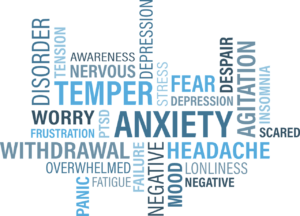 Estimates state that at least 20% of Iraq and Afghanistan veterans have PTSD, and 50% of those with PTSD do not seek treatment. With behavioral health care becoming a major issue for this population, there has been increased motivation to find better solutions for prevention and treatment. Promising results have been found using virtual reality for both stress resilience and management. And, while visual and auditory factors are most common among research stimuli, studies have shown that olfactory input could play a major part as well.
Estimates state that at least 20% of Iraq and Afghanistan veterans have PTSD, and 50% of those with PTSD do not seek treatment. With behavioral health care becoming a major issue for this population, there has been increased motivation to find better solutions for prevention and treatment. Promising results have been found using virtual reality for both stress resilience and management. And, while visual and auditory factors are most common among research stimuli, studies have shown that olfactory input could play a major part as well.
Olfactory Input in PTSD
There can be many factors that trigger the “flight or fight” symptoms of PTSD. Sights and sounds similar to the traumatic event can commonly produce a reaction, but less well known is the strength of smell. In fact, odors have been found to be more closely connected to affect than other sensory experiences, and can be significant precipitants of traumatic memories. Recent studies have focused on the areas of the brain related to olfactory responses and memory.
Common Treatment for PTSD
Prolonged Exposure Therapy is part of the prevailing treatment for PTSD. This therapy asserts that by imagining and dealing with the memories and feelings surrounding the trauma, the patient becomes “desensitized” over time, less overwhelmed and better emotionally equipped to manage those thoughts and feelings. However, while exposure therapy has been shown to be effective, many PTSD sufferers are hesitant or unwilling to visualize the traumatic event.
How Is Virtual Reality Used?
Using virtual reality advanced technology, participants can become “immersed” within a computer generated environment, complete with multisensory stimuli, providing a more controlled therapy experience. Visual and auditory input have dominated the field of virtual reality, however, research has recognized olfactory stimulation as a potentially powerful yet underutilized therapeutic tool.
Benefits of Virtual Reality Treatment
Virtual reality offers clinicians the ability to control and document the intensity of the therapeutic experience, which is not possible when a patient is simply using their imagination to access those traumatic memories. Additionally, virtual reality may offer a more appealing treatment option, with less “stigma” for those service men and veterans who are of the “digital generation.”
Virtual Reality for Prevention of PTSD
Virtual reality is also being researched as a part of preparation and training for the military. Studies show that repeated exposure to emotionally challenging stimuli before an event can create “stress inoculation” or resilience. In this way, controlled virtually reality therapy can help soldiers mentally prepare for the physiological stressors they may face during deployment.
Taking care of our military should be a top priority. Initial research into the use of virtual reality for prevention and treatment of PTSD has been extremely promising; additional studies will likely better define the effective use of traumatic stimuli including olfactory input. SensoryCo is an expert in scenting systems and a leading producer of non-toxic, realistic aromas and malodors. We have partnered with various organizations and training facilities to provide custom solutions for multisensory training for first responders, including fire fighters, law enforcement, military and more.




